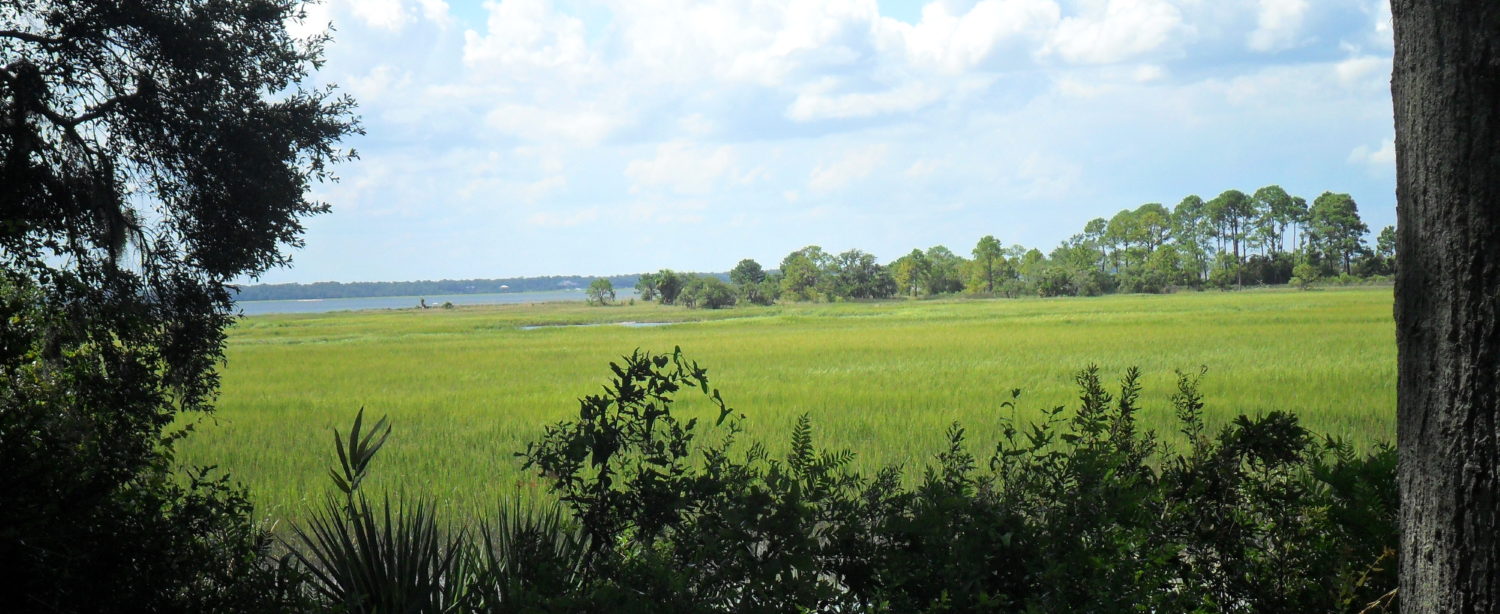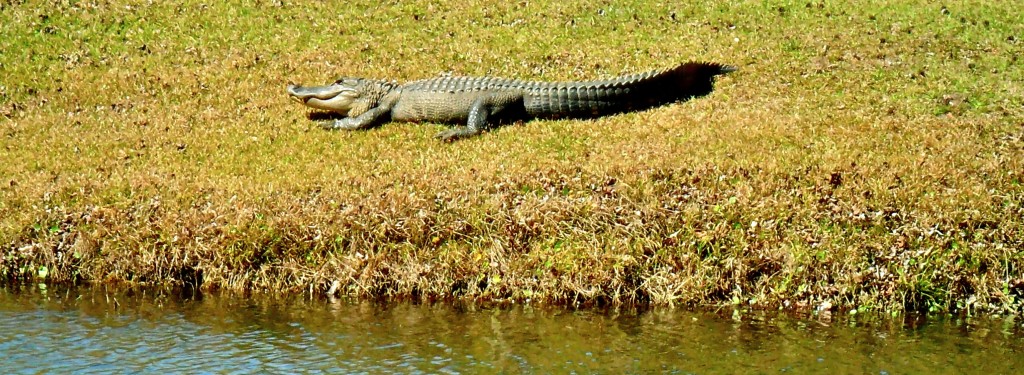Another hot and sunny August of slipping into the water to stay cool. The trick on any Low Country summer day, balancing mommy time in the water with a watchful eye on the kids. It’s a skill cultivated over years of sultry humid hours spent escaping the heat without closeting oneself away. Water becomes a comfortable compromise, a place where mommies can cool off while the kiddies play.
Danger lurks. Moms know one eye, always, remains on the kids. In case they get into trouble in the water. Or a stranger gets too close. Or some predatory animal skirts nearby. So many ways a child can be taken away. The wise mother shakes off this sense of doom. Overprotection, after all, has its own hazards. A child that never finds independence, never learns to make decisions. Never swims on its own. Only the smallest babies merit the highest alert level.
Suddenly, she freezes, this mother. Her babies remain where she left them, safe and snug, but danger approaches. Two dogs and a stranger are treading far too close, nearing their haven at an alarming pace. Mom slips through the water, stealthy, ready to protect her babies from harm, hoping these intruders will move in another direction. They don’t. They close in, so close she fears for her babies’ lives.
A blistering rage courses through her brain. She acts without thinking, sprinting out of the water, putting herself between them and her babies, hissing “get away from them” in her most aggressive growl. They do not move. In fact, one of them plops down even closer to her babies than before, and begins kicking at them. Her path is clear, requiring no plan. She leaps, grabs the offending foot, and chomps down hard enough to scare them all away.
Once they run off, she checks her nest, then settles back into the water, a little closer for awhile, just to be cautious.
The nightmare begins later that day.
First, more intruders invade her space, so many that she finds she cannot protect her nest. She sees them open up what she carefully constructed in June. She had created the perfect mud floor. Covering this, a combination of mud and load upon load of giant cordgrass carried to the spot over several days. She’d dug out a beautiful cone into which she’d laid almost 60 eggs two months ago, and made a haven for her hatchlings, who were due in just a few days. She was almost there when this hell descended. They went into her nest, and even though she tried to run them off, they did not scare. She found that after chasing the first intruders away, she didn’t have the energy to pursue this new group for long before she had to retreat into the water and rest.
When she came back out a few hours later to check on the nest, they were still there, and pushed her away again. By the next day, she was so tired that they managed to loop a rope around her, and pull her out of the lagoon altogether. Her nest a few feet off the bank had been dug into; she could see some of the eggs as they carried her past.
She had failed. She had lived in this lagoon for more than ten years, but this one bite spelled her doom. There would be no hatchlings, ever. Nor would this valiant mother live to breed next year. Those gator eggs, however, will foster some very plump raccoons this Low Country August. And mom will perhaps grace some Low Country table. And a lovely handbag.
When the storied Island Packet reported this incident August 15, 2013, it quoted Critter Management, who disposed of the eight-foot, one-inch female alligator. Asked about her nest of 40 to 60 eggs left untended, they replied, “We’ve been told to let nature take its course.”
One has to wonder, told by whom? And how do we allow nature to take its course so conveniently here, when we’re unwilling to allow Mama Gator to do so by protecting her young earlier?
In 1973 the Endangered Species Act named the American alligator to its endangered list. Its population had been decimated, hunted to near-extinction by the 1960’s to provide that distinctive skin for shoes and belts and purses and suitcases. Ironically, the very breeding behaviors exhibited by the mother on Hilton Head Plantation that August day allowed her species to make an historic comeback. They were removed from the endangered list in 1987, and can now be in current euphemism “harvested” for their meat and skin. Critter Management’s “we’ve been told” implies a complex latticework of rules determining what alligator lives, and what alligator, suddenly a nuisance, enjoys “harvesting”.
On the one hand we have a human portrayed as victim, this poor lady who does not live in the neighborhood, walking a friend’s dog as a favor. We’re offered that most human of motives, “It was such a nice day.” So of course she chose to walk them around the lagoon bank, rather than use the miles and miles of beautiful walking paths a safer distance away.
That any South Carolina resident should understand alligators inhabit lagoons, not mentioned. That said native should know alligators build nests three to ten feet from lagoon banks, not important. That this kind neighbor should understand that from June to September in South Carolina a mother alligator will be guarding said nests, just not news. The fact that such a creche of baby alligators will bond and stay together for three years, beneath notice. Alligators may sell newspapers, but they don’t buy many.
Rather, we hear about a traumatized woman with “pencil-eraser sized” puncture wounds suffering a course of antibiotics–not as just desserts for her own behavior, but as justification for that alligator’s demise. Her gain: a front-page story in the local newspaper, complete with photo-op, and later a bit on CNN.
That alligator, though? The one who was where she belonged, doing what she was born to do? The one who had lived there for a decade, without incident? She who was cruelly hounded until exhaustion allowed her capture and execution? This brave mom lost her life, and the lives of the 40 to 60 babies she tried to protect. Who can she call to remove the invasive species that endangers her kind? Who speaks for these Low Country mothers?

